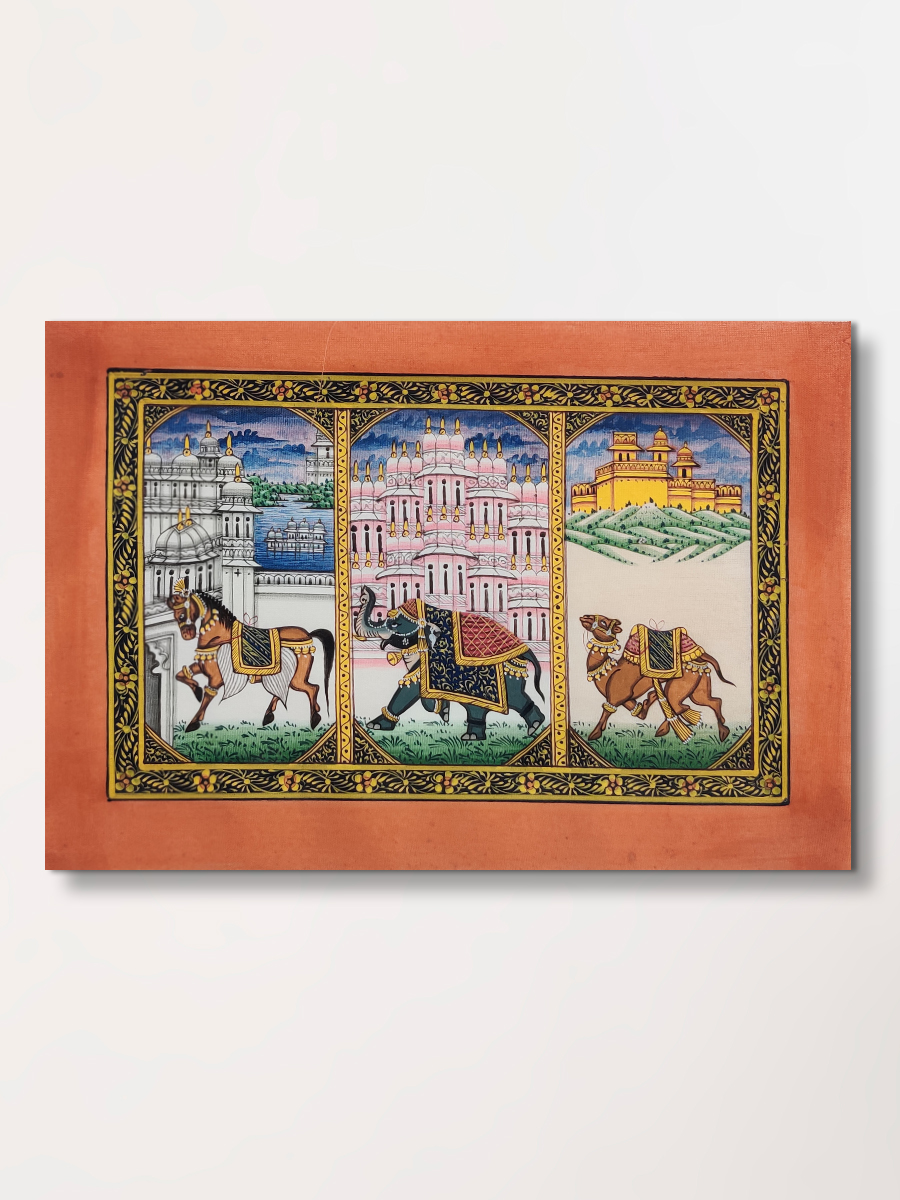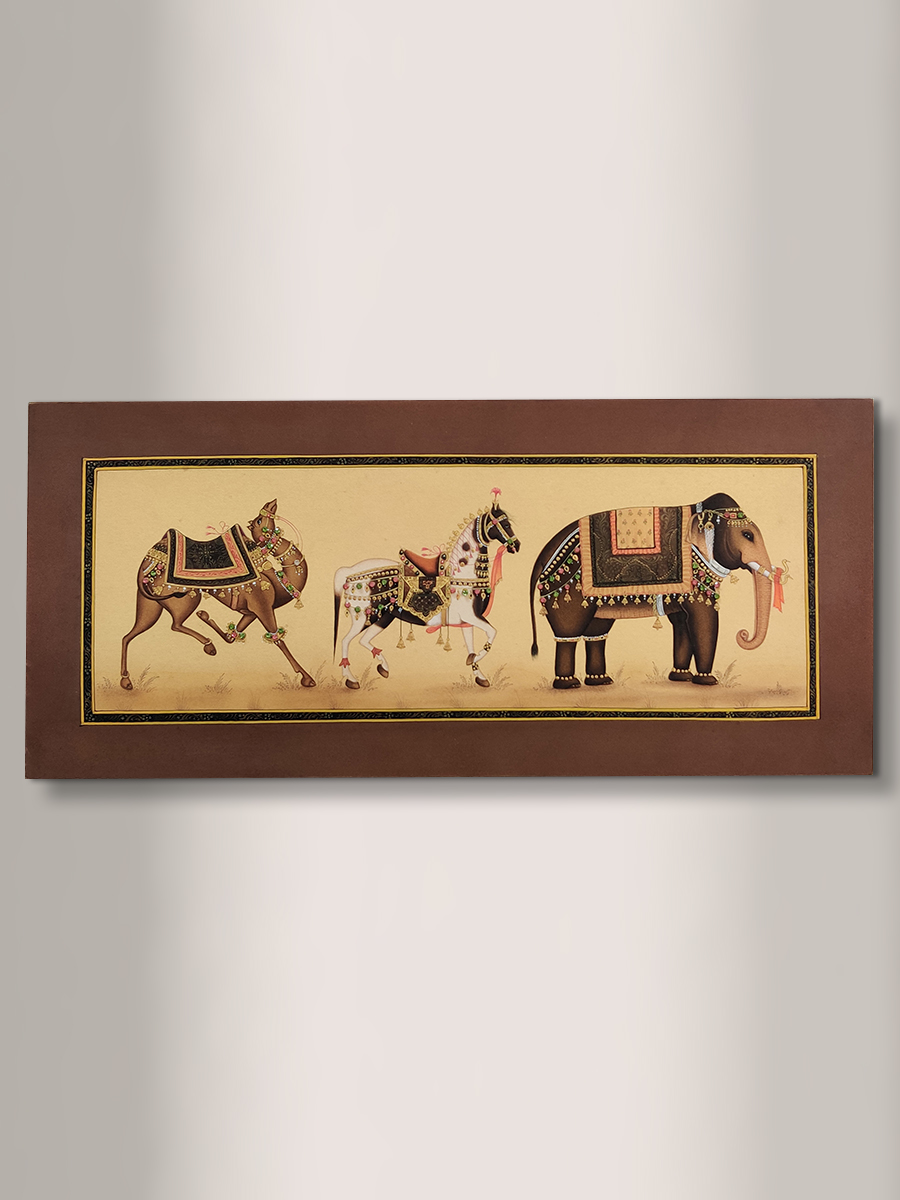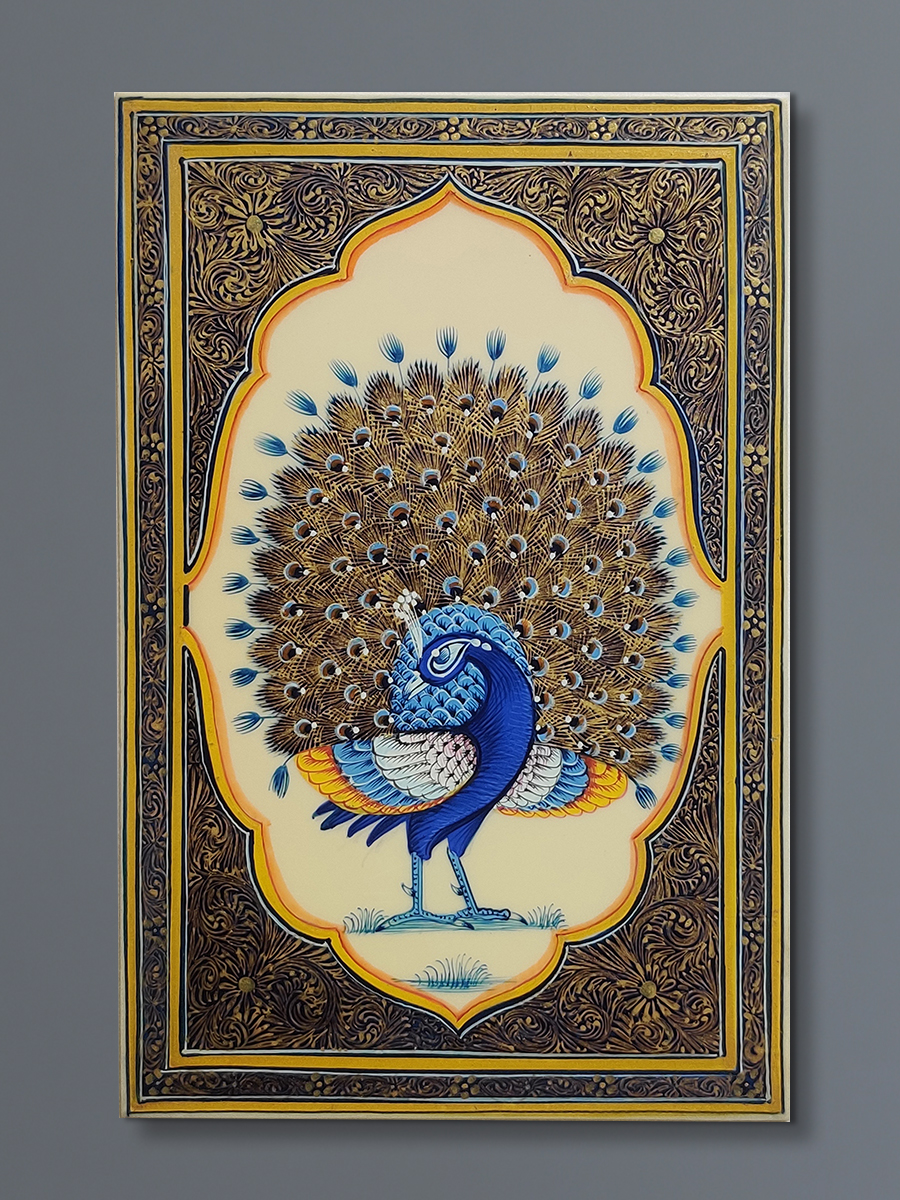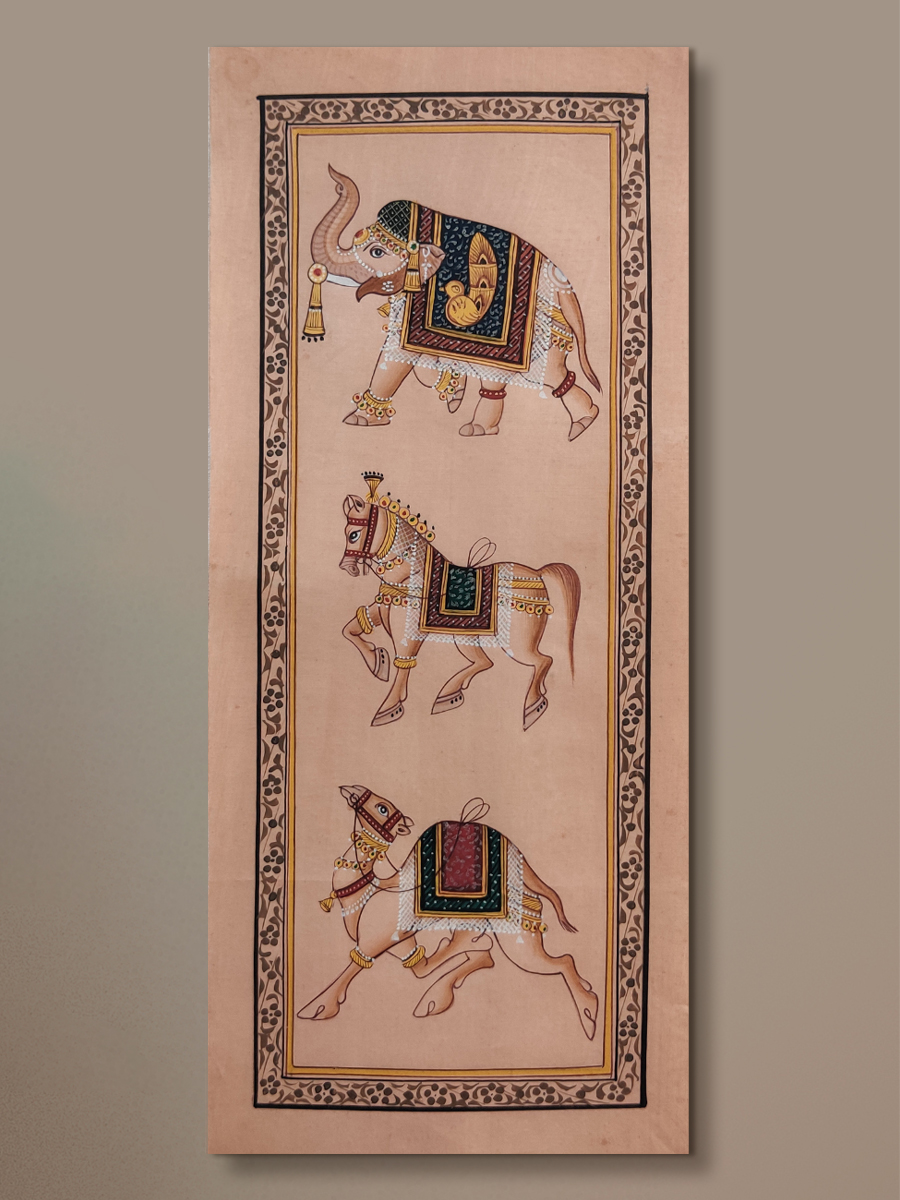The Beauty of Rajasthani Miniature Paintings – Unique Art Form of India
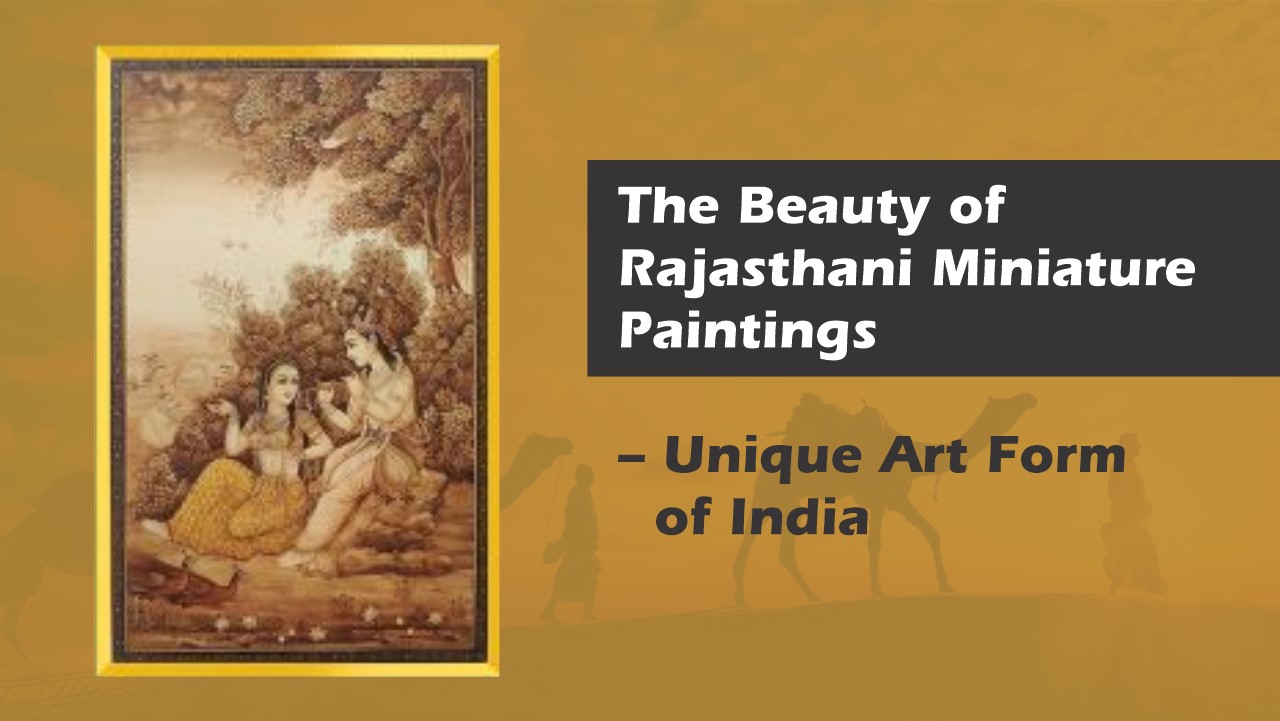
Spanning Centuries in India:
From the 16th to 19th century, Mughals brought this art of miniature paintings to India. Mughal emperors, including Akbar, were the prominent patrons of this beautiful art form, and encouraged the artisans who practised the art, but kept them anonymous. Many artisans trained in one miniature style, took their art form to another location, altering or creating new styles. There are multiple miniature styles from various eras and geographical areas that have impacted one another. Paintings in miniature have never been static, but the vivid colours and the blend of Persian and Indian artistic traditions have given these paintings certain unique characteristics.
The unique style, delicate brushwork, intricate details, and bright colours made this artform very popular during the Mughal period. It was further developed in the courts of the kings of Rajasthan, where the Rajasthani miniature paintingsacquired a distinct style.
Handmade Rajasthani Miniature Painting of 3 traditional motiffs with palaces at dusk
Rajasthani Miniature Paintings:
Rajasthan is one of the first states to explore the art of miniature paintings in India. Through the deep connections with the art of Gujarat and Ajanta, this folk art began its journey of establishment in the Marwar region, as a textual illustration of the Jain Kalp Sutras, in the early 15th century.
In the 16th century, the ruling Mewar dynasty promoted miniature paintings to illustrate manuscripts and decorate the walls of palaces and temples. While the Mughal miniature painting depicted the royal life, Rajasthani artwork focused on the representation of the love story of Lord Krishna, stories from Ramayana and Mahabharat and many other themes from Hindu mythology.
The Marwar region, including the city of Jodhpur, also developed a tradition of miniature paintings, with simple styles characterized by more straightforward compositions and a limited colour palette. As Rajasthani miniature paintings started gaining in popularity, they began to spread to other regions of India, and by the 18th century, it was widely recognized as a distinct artform.
Handmade Rajasthani Miniature Painting of 3 royal motiffs
Preserving the Rich Variety of Indian Culture & Hindu Mythology:
Miniature Paintings have expressed & preserved the rich variety of Indian culture and Hindu mythology. During the 16th to 18th century, texts like Rasikapriya, Surasagara, Ramayana, and Bihari-Satsai, despite the intrusion of Mughal elements, were the most dominant themes in the Mewar region.
- Rasikapriya was a poem written by the poet Keshavdas. It was a famous source of inspiration for Mewar painters with themes such as love, beauty, and the nature of art, which provided a framework for understanding the role of the art in Indian society.
- Surasagara was a collection of devotional poetry, widely popular in Mewar, that delivered a rich source of themes for miniature painters, like love for the divine, devotion, and the search for spiritual fulfilment.
- Ramayana and Bihari-Satsai were popular themes as they provided a huge wealth of material for painters. The Ramayana, an ancient Hindu epic, tells the story of prince Rama and his search to rescue his wife Sita from the demon king Ravana. Bihari-Satsai is a collection of devotional poems by the poet Bihari, depicting love, devotion, and the search for the divine.
The use of Persian themes and styles blended with traditional Hindu texts, remained the dominant themes of Mewar, reflecting the Hindu cultural heritage of that region.
Handmade Rajasthani Miniature Painting of orange and blue peacock
Miniature Paintings & Jainism:
Jainism has strongly inspired the Indian miniature paintings with western influence. Jain communities in Rajasthan authorized Rajasthani miniature painters to illustrate religious texts to show important events in Jain history, depicting the scenes from the lives of Jain Tirthankaras (saints) and religious themes like the attainment of spiritual liberation. Many Jain sutras were translated into beautiful illustrations using this tremendous artwork.
Miniatures Brought Stories to Life:
Indian literature has had a significant influence on miniatures. These paintings were frequently used as solo paintings and text illustrations to bring to life stories from these literary sources. Indian artists created illustrations of religious scriptures, fables, and epics so that those who couldn't read them could still understand the story through the art.
Rajasthani miniature paintings have reflected and maintained the great diversity of Indian culture and history, from paintings of the Janamsakhis to illustrated histories of Guru Nanak, the founder of Sikhism. Frequently, brushes with just one bristle were used to highlight fine details, using delicate and highly specialized techniques.
Miniatures are wonderful examples of rare and fine craft or handmade products, painted by master artisans, who are an essential part of this rich tradition. These artists have beautifully brought their skills, knowledge, and creativity to this tradition and helped preserve its cultural heritage. The traditions are carried forth to modern times by the current generation of miniature artists, who are encouraged to continue and refine their craft by recognizing their contributions through numerous national and international awards for their work.
Handmade Rajasthani Miniature Painting of 3 traditional motiffs vertical
And so, this art continues to be popular today. Despite the fact that contemporary artists frequently plagiarise genuine works of art, specialists in this field are optimistic about the future of miniature paintings, not only in India, but also globally by creating newer themes and developing unique stylized techniques for making genuine Indian Handicrafts Online more popular.


 USD
USD  GBP
GBP EUR
EUR AED
AED



